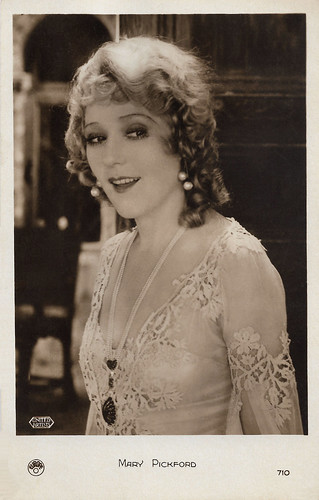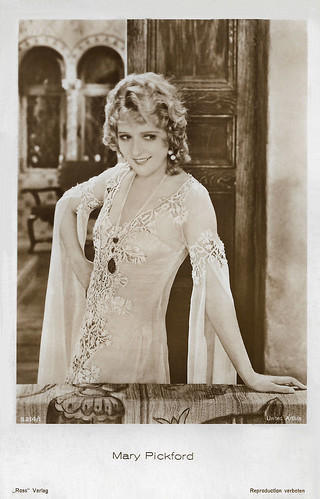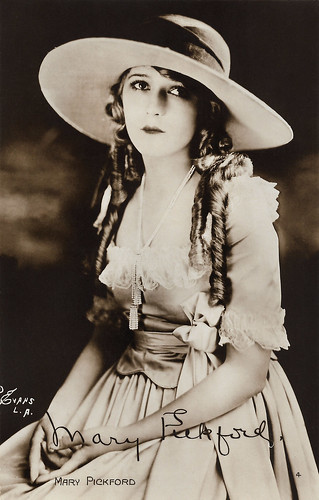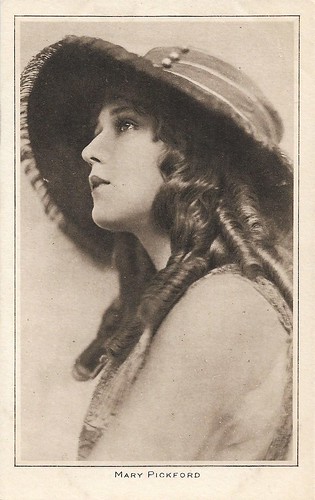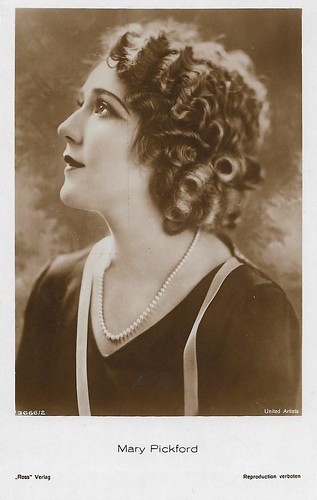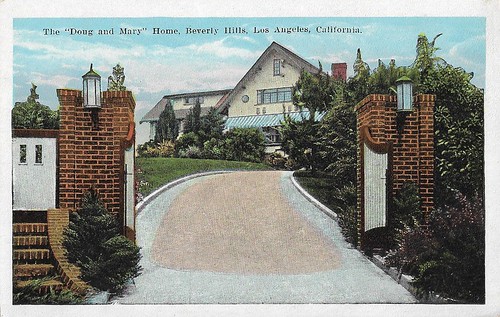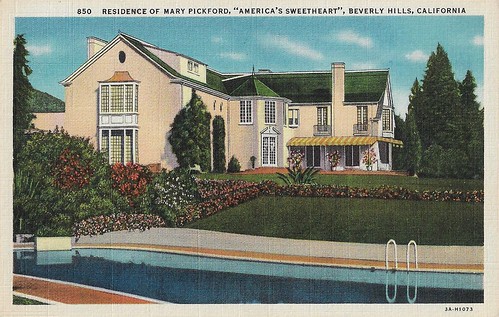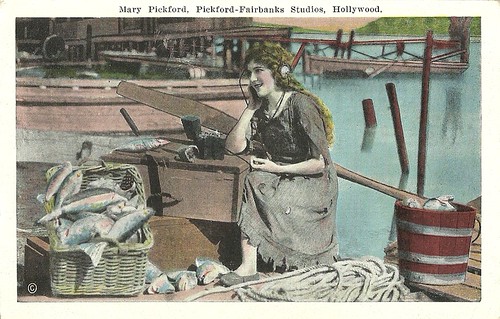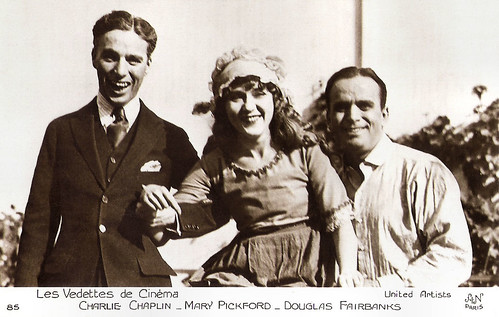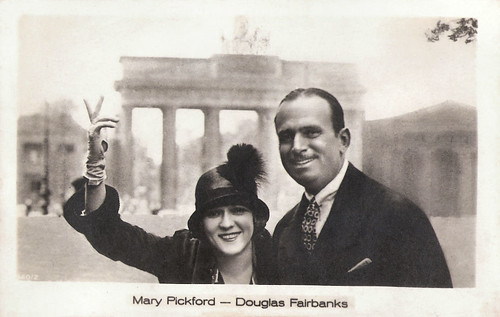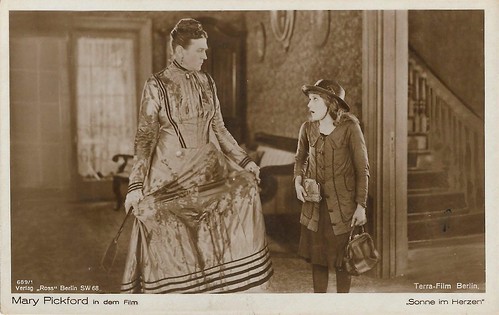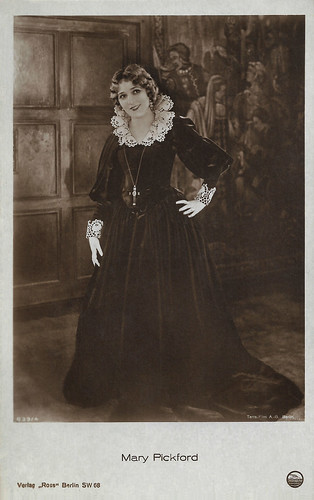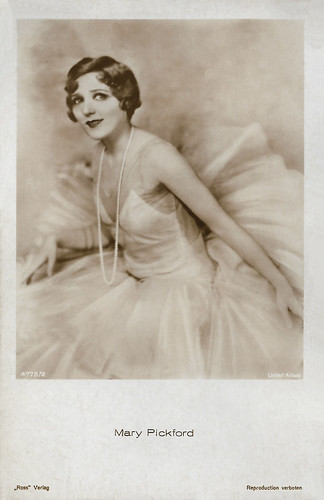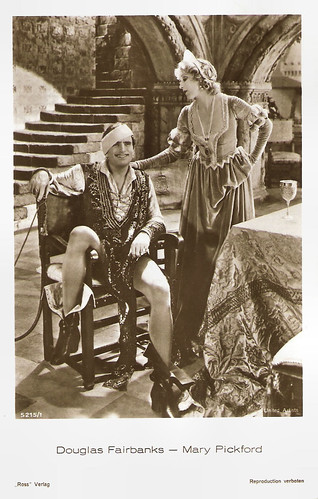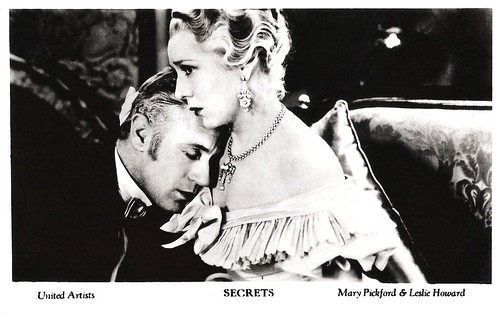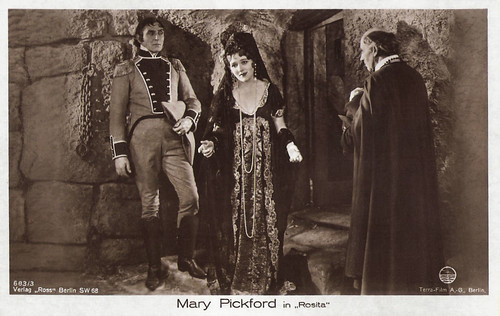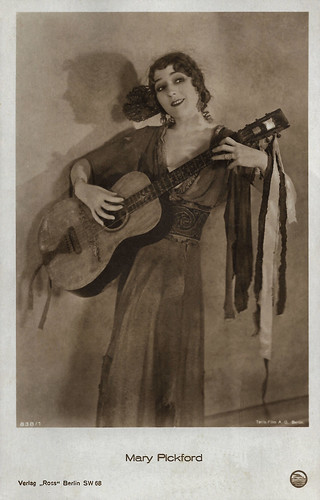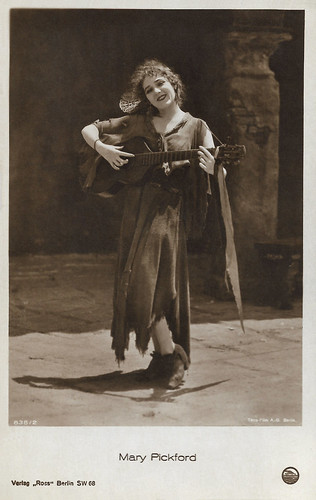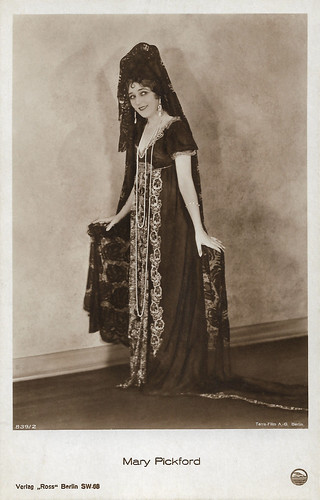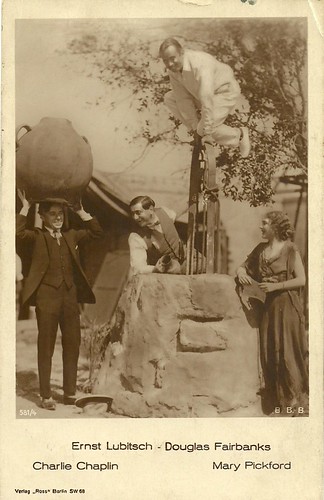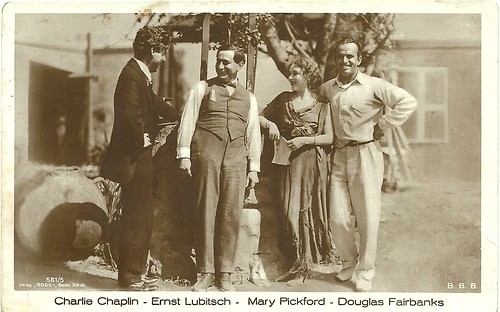
Italian postcard by Ed. Vettori, Bologna, no. 697. Photo: United Artists. Mary Pickford in Sparrows (William Beaudine, 1926). The Italian release title was Passerotti.

Italian postcard by Ballerini & Fratini, Firenze, no. 776. Photo: United Artists. Monty O'Grady and Mary Pickford in Sparrows (William Beaudine, 1926). The Italian release title was Passerotti.

Italian postcard by G.B. Falci Editore, Milano, no. 497. Mary Pickford and Mary Louise Miller in Sparrows (William Beaudine, 1926).
A horror baby farm
Sparrows (1926) is situated in the American South where the mean Mr Grimes (Gustav von Seyffertitz) runs a farm with his wife (Charlotte Mineau) and their mentally retarded son Ambrose (Spec O'Donnell), surrounded by barely accessible swamps and alligators. The Grimes family admits abandoned children and babies - mainly orphans - so they can work on their land. The children have hard-working hours and are mistreated, almost starved, and practically kept in prison by their wicked guardians. They have to hide when strangers turn up to conceal these conditions from the outside world.
The eldest orphan, Molly (Mary Pickford), mainly looks after the small children and occasionally steals food for them. She is motivated by charity and her faith in God, which she also tries to pass on to the boys and girls. God, says Molly, would watch over everyone here and protect them just as he does for the sparrows... When a cattle dealer appears on the farm one day, Ambrose Grimes sells him one of the children for profit: Splutters, the little ‘stutterer’. Meanwhile, Molly keeps the increasingly desperate children happy by repeating the Bible quote about God's sparrows so that the little ones never completely lose hope.
Ambrose catches Molly embezzling potatoes because the children are starving. Despite Molly's insistent pleas, old Grimes makes all the children suffer and tortures them even more cruelly. The youngest of the children is already so ill that he dies the next night in the face of this latest affliction. Like a vision, Jesus Christ enters the barn and takes the baby to himself. When Molly wakes up, the little one is dead.
The Grimes clan is becoming increasingly brutal and ruthless. They kidnap the infant Doris Wayne (Mary Louise Miller) to extort a ransom from her father, a millionaire. Molly is overjoyed with the new baby. When Mr Grimes reads about the kidnapping in the newspaper a few days later, he tells his son to throw the baby into the swamp so as not to lead the police onto Grimes' trail. At the last moment, the courageous Molly can prevent this crime and takes Doris. The young woman realises that she and her ‘sparrows of God’ must finally stand up to their murderous tormentors. First, she tries to fend off the Grimes threat with a pitchfork. Then they all finally dare to escape. The little trek of minors sets off to cross the dangerous swamp, where hungry alligators are just waiting for fresh meat. Grimes is not worried about this; he firmly believes that either the swamp or the alligators will do the dirty work for him and devour the fugitives. In fact, all the children escape unharmed and hide in a motorboat that belongs to the kidnappers.
Splutters, the ‘stutterer’ (Monty O'Grady) has escaped from his ‘buyer’ and is recognised as one of the missing children. He tells the Police about Mr Grimes' horror farm and his family. Mr Wayne (Roy Stewart) is also present and hopes to get his little daughter back soon. Finally, the police set out to carry out a large-scale raid in the swamps. Molly's hiding place in the boat proves to be too dangerous. Old Grimes is chased by the police during the raid, flees into the marshes and sinks there. Mrs Grimes and her wayward son reach the motorboat where Molly and her ‘sparrows’ had just been and flee. As they are unable to shake off a police boat patrol, they switch to a more manoeuvrable rubber dinghy, but are immediately run over by the police boat and also die in the muddy water. Molly and the others, including the kidnapped Wayne baby Doris, are rescued, and as an act of gratitude, the rich Mr Wayne promises to look after all the rescued children from now on.

Austrian postcard by Iris Verlag, no. 906. Photo: United Artists / Projectograph-Film. Mary Pickford and Mary Louise Miller in Sparrows (William Beaudine, 1926).

Italian postcard in the Archivio series by Diesse F. Lli de Siena / S. Girogrio A. Cremano, Napoli, no. 41. Mary Pickford in Through the Back Door (1921). The Italian postcard refers to Passerotti, the Italian title for Sparrows (William Beaudine, 1926). EFSP collaborator Marlene Pilaete writes us: 'Through the Back Door is available on YouTube. I've watched the beginning and after approximately 13min43 of running time, you see Pickford in the same dress, with the same furniture and you can also see the doll, By the way, did you notice that the doll is a traditional little Dutch boy. As Pickford plays a Belgian girl in Through the Back Door, it makes sense. The Archivio postcards were issued in the 1970s or 1980s and I think the mistake comes from that they were made much later after the Pickford movies were made.

Italian postcard in the Archivio series by Diesse F. Lli de Siena / S. Girogrio A. Cremano, Napoli, no. 42. Marlene Pilaete: "I think that the Archivio Series postcard nr 42 also comes from another movie than Sparrows, maybe also from Through the Back Door. On this postcard, Mary Pickford sports her famous curls and she is well-dressed. In Sparrows, she sports her hair with braids and wears plain and worn-out dresses."
There wasn't an alligator within ten miles of Miss Pickford
According to a then-well-established theatrical and cinematic convention, the role of Molly was given to an adult actress, while child actors were given supporting parts. Mary Pickford, already 33 years old at the time of filming, had specialised during her career in such little girl parts, and Sparrows (1926) was the final one in a long successful row. Sparrows was Pickford's next-to-last silent role, followed by My Best Girl (1927) in which she played a young woman of indeterminate age. After that, Pickford made some talking pictures before retiring to Pickfair, her estate, with her husband Douglas Fairbanks.
Sparrows was produced by the Pickford Corporation with an estimated budget of $463,455 and shot in July 1925 in West Hollywood. It was directed by William Beaudine and (uncredited) Tom McNamara. Winifred Dunn wrote the story. Art director Harry Oliver designed the magnificent film set. He went to great lengths to transform 4 acres (16,000 m2) of the back lot between Willoughby Avenue and Alta Vista Street into a stylized Gothic swamp. The ground was scraped bare in places, 600 trees were transplanted, and pits were dug and filled with a mixture of burned cork, sawdust and muddy water.
Sparrows is a full-blooded Gothic melodrama. The subject matter is dark, and some of the horrors are reminiscent of Charles Dickens, but the darkness is interspersed with plenty of laughs. Mary Pickford plays naturally and her little co-stars are of unprecedented ease. The film also presents Gustav von Seyffertitz with the best role of his career. Distributed by United Artists, the film premiered in Hollywood on 14 May 1926 and in New York on 19 September. Some critics expected that Sparrows would be too strong for audiences, but it did well. In the United States, the film grossed $966,878. In later years, Pickford repeatedly recounted the story that she was concerned that director William Beaudine was jeopardizing the actors, particularly when he insisted she carry a real baby, rather than a doll as she wanted, across some water teeming with alligators (albeit with their jaws bound shut). However, Hal Mohr, the film's director of photography, debunked this tale, saying "There wasn't an alligator within ten miles of Miss Pickford," and revealing in precise detail how the effect was done.
An incomplete six-reel copy of the film - a 35 mm nitrate tinted positive - is preserved in the archives of the Library of Congress (American Film Institute / Mary Pickford collection). A 35 mm positive is in the archives of the Cinémathèque Française; negatives and positives are in those of the Mary Pickford Institute for Film Education film collection. The film was presented in 2008 at the Giornate del Cinema Muto (the Pordenone Silent Film Festival) in Italy.
Film historian Jeffrey Vance considers Sparrows to be Pickford's masterpiece. In his program notes for the Giornate del Cinema Muto, Vance wrote: "Sparrows is her most fully realized and timeless work of art. The film’s superb performances, gothic production design, and cinematography all serve a suspenseful, emotionally compelling story anchored by a central performance by Pickford herself imbued with pathos, humour, and charm." In 2012, Milestone Film & Video released the Library of Congress restoration of Sparrows to DVD and Blu-ray, as part of the box set 'Rags and Riches: Mary Pickford Collection". It contains an audio commentary track by Jeffrey Vance and Tony Maietta.

Italian postcard by Edit. B.F.F. (Ballerini & Fratini, Firenze), no. 473. Photo: United Artists. Mary Pickford in Sparrows (William Beaudine, 1926). The Italian release title was Passerotti.

German postcard by Ross Verlag, no. 1852/2, 1927-1928. Photo: United Artists.

Italian postcard by Ed. Vettori, Bologna, no. 700. Photo: United Artists. Mary Pickford in Sparrows (William Beaudine, 1926). The Italian release title was Passerotti.
Sources: Wikipedia (Dutch, French, German, Italian and English) and IMDb. With special thanks to Marlene Pilaete!








